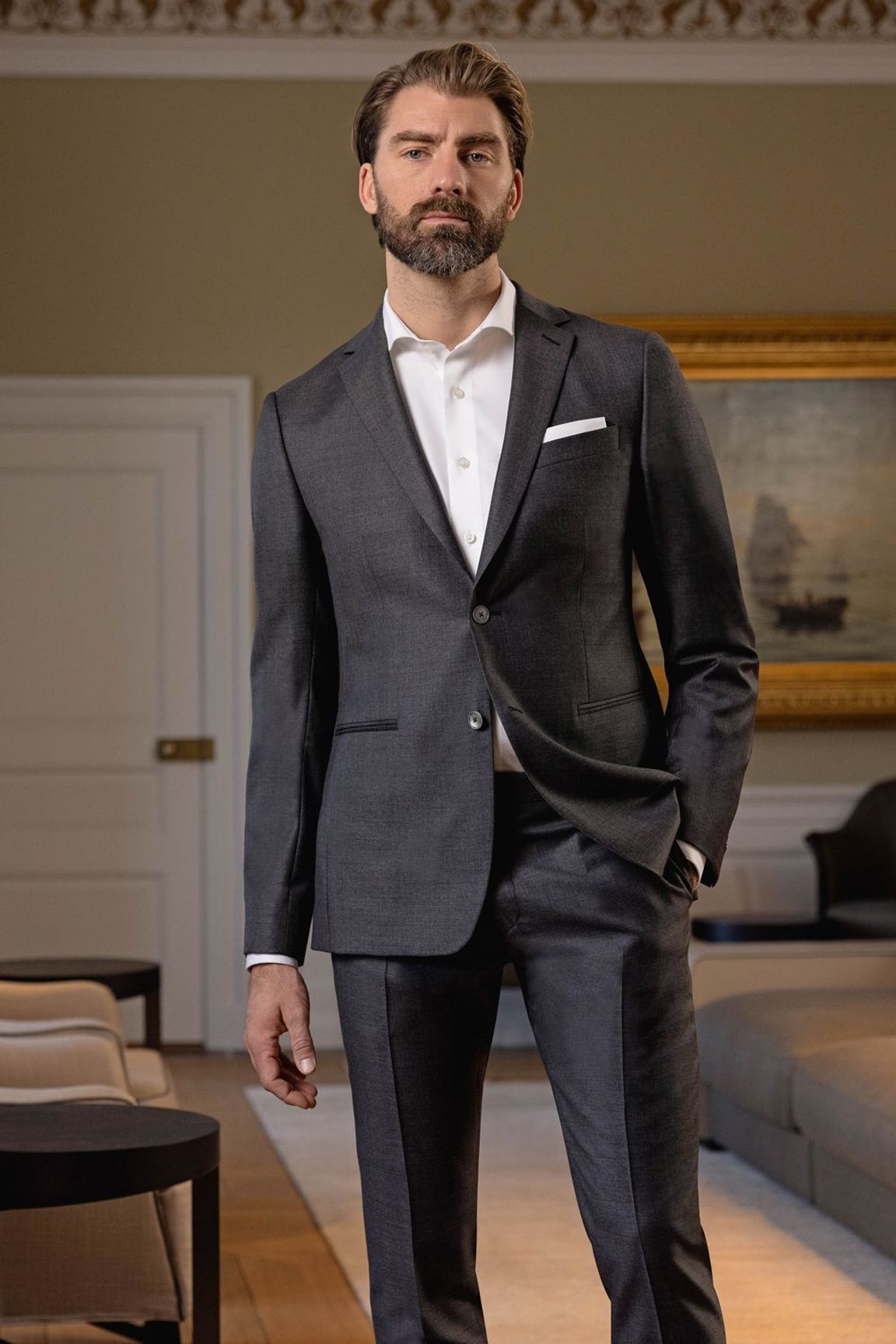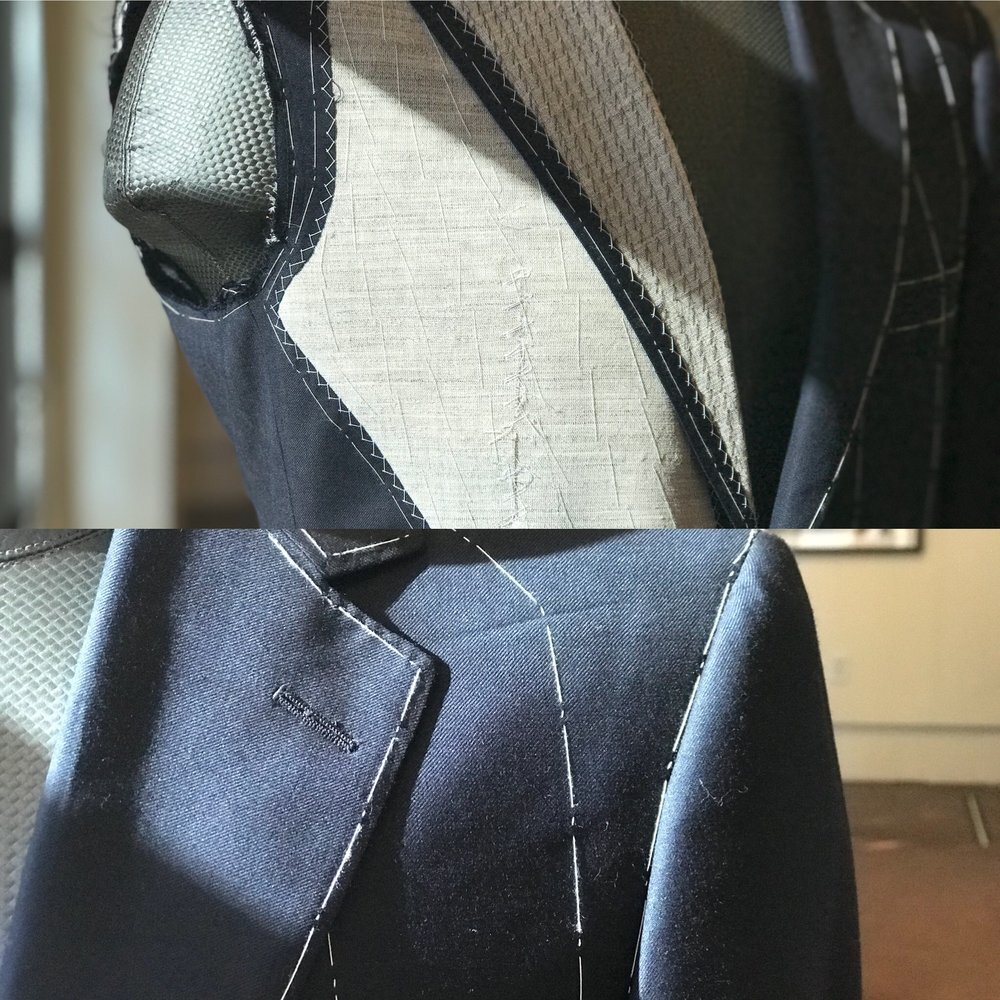Bespoke Tailor Perth: Personalized Suits Made Just for You
Bespoke Tailor Perth: Personalized Suits Made Just for You
Blog Article
Comprehending the Tailoring Refine: From Material Selection to Final Fitting for the Suitable Closet
The tailoring process is an intricate interaction of art and science, beginning with the crucial choice of fabric option and finishing in the exact changes of final installations. Each fabric type brings one-of-a-kind qualities that influence not just the visual allure yet also the garment's long life and viability for different celebrations. Comprehending the nuances of customizing methods can elevate one's wardrobe to extraordinary degrees of sophistication. As we explore these aspects further, one should take into consideration exactly how even the tiniest details can considerably affect the total outcome of one's individual style.
Relevance of Textile Selection
Choosing the appropriate textile is essential in the customizing process, as it directly influences the convenience, toughness, and general aesthetic of the last garment. The option of textile sets the structure for the garment's efficiency, performance, and design. Different textiles have special buildings, such as breathability, stretch, and weight, which can considerably impact exactly how the garment drapes and fits the body.

A customized piece made from a suitable fabric not just showcases craftsmanship yet also raises the wearer's confidence. As a result, recognizing the subtleties of material choice is paramount for any kind of customizing endeavor. It makes certain that the end product not only satisfies the visual needs of the client but also straightens with useful requirements, therefore accomplishing a harmonious balance in between type and feature in the customized closet.
Types of Fabrics and Their Uses
Recognizing the numerous kinds of textiles offered is vital for making informed decisions throughout the tailoring procedure. Each textile has one-of-a-kind features that dictate its viability for details garments and occasions.
Its versatility allows it to be tailored right into every little thing from t shirts to outfits. Its all-natural flexibility helps garments maintain shape over time.
Silk exudes high-end and is light-weight, making it best for eveningwear and fragile blouses; nonetheless, it needs careful handling due to its fragility. Bed linen, with its distinctive finish, is a preferred choice for warm environments, giving a crisp and ventilated feel, but it wrinkles conveniently, which might impact the garment's look.
Artificial fabrics, such as polyester and nylon, offer durability and resistance to wrinkles, making them suitable for daily wear and energetic apparel. Recognizing these textile types and their buildings permits far better decision-making, ensuring that each tailored item not only fits well yet also lines up with the intended purpose and occasion.
The Tailoring Methods Described
The art of tailoring depends on a range of strategies that transform material into well-fitted garments. Central to this process is pattern drafting, where a tailor creates design website here templates based on the customer's dimensions and preferred design. This first action guarantees that the garment will fit the wearer correctly prior to any type of reducing takes place.
Once patterns are developed, cutting methods enter into play. Precision is paramount as errors can cause misfitting garments. Tailors commonly use numerous cutting techniques, such as single-layer reducing for elaborate styles and multiple-layer cutting for effectiveness on common patterns.
Basting is an additional essential technique, enabling tailors to briefly stitch material items together for a preliminary fitting (custom suits perth). This approach supplies the possibility to analyze the drape and total shape prior to final stitching
Seaming methods, including flat-felled seams and French seams, boost the garment's longevity and visual charm. Tailors likewise utilize techniques such as interfacing and padding to provide framework and form to details areas, like this article collars and shoulders.
Finally, finishing strategies, consisting of hemming and side completing, ensure the garment's longevity while giving a sleek look. Together, these strategies create the backbone of effective customizing, leading to splendid, custom-fit apparel.

Fitting Changes and Considerations
After the first tailoring methods have actually been applied and the garment is created, fitting modifications become critical to attaining the best fit. These changes deal with numerous elements of the garment, guaranteeing it contours to the user's physique and improves total appearance.

The increase of pants is an additional critical factor; it should rest pleasantly over the hips without triggering discomfort, enabling ease of movement. Hemming sizes for both trousers and skirts must show the wearer's preferred design while valuing percentages.
In addition, interest ought to be offered to the back of the garment, ensuring that there are no undesirable pulls or excess fabric - tailor perth. Each adjustment should be diligently taken into consideration, as even small changes can substantially affect the overall fit and visual of the tailored piece, inevitably resulting in a closet that shows confidence and sophistication
Keeping Your Tailored Attire
Correct maintenance of customized garments is vital to preserving their fit and look in time. To make sure longevity, normal cleaning is extremely important. Always adhere to the care tag instructions, which might advise dry cleansing for delicate materials or machine cleaning for even more resilient products. Prevent constant laundering, as this can use down the textile and change the garment's form.
Storage is similarly vital; use cushioned wall mounts for jackets and coats to preserve shoulder framework, and store trousers folded up nicely or hung to avoid creasing. Secure garments from straight image source sunlight, which can fade colors and damages fibers.
Additionally, regular evaluations for minor repair services can stop bigger concerns. Examine for loosened switches, tearing joints, or indicators of moth damages, resolving these troubles without delay to keep the garment's honesty.
Last but not least, take into consideration seasonal turning. Using customized pieces in moderation allows fabrics to recover, extending their life-span. By applying these upkeep approaches, you can make certain that your customized garments stay as excellent as the day you first wore them, boosting your excellent closet for many years to find.
Final Thought
The customizing process, including fabric choice, experienced strategies, and accurate suitable modifications, plays a critical function in developing garments that improve both convenience and style. Comprehending the importance of upkeep expands the life of customized garments, solidifying their worth in a well-curated closet.
Report this page